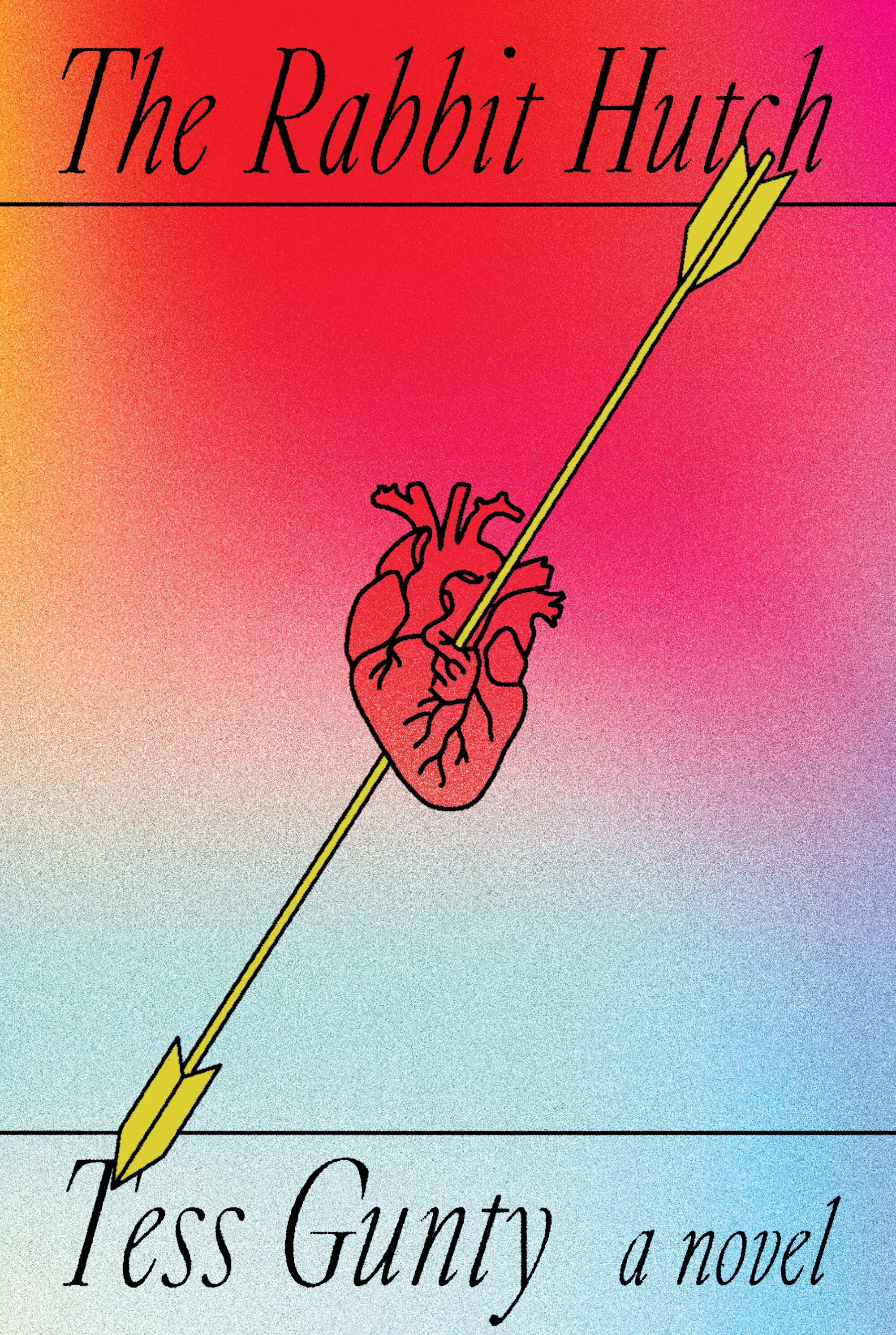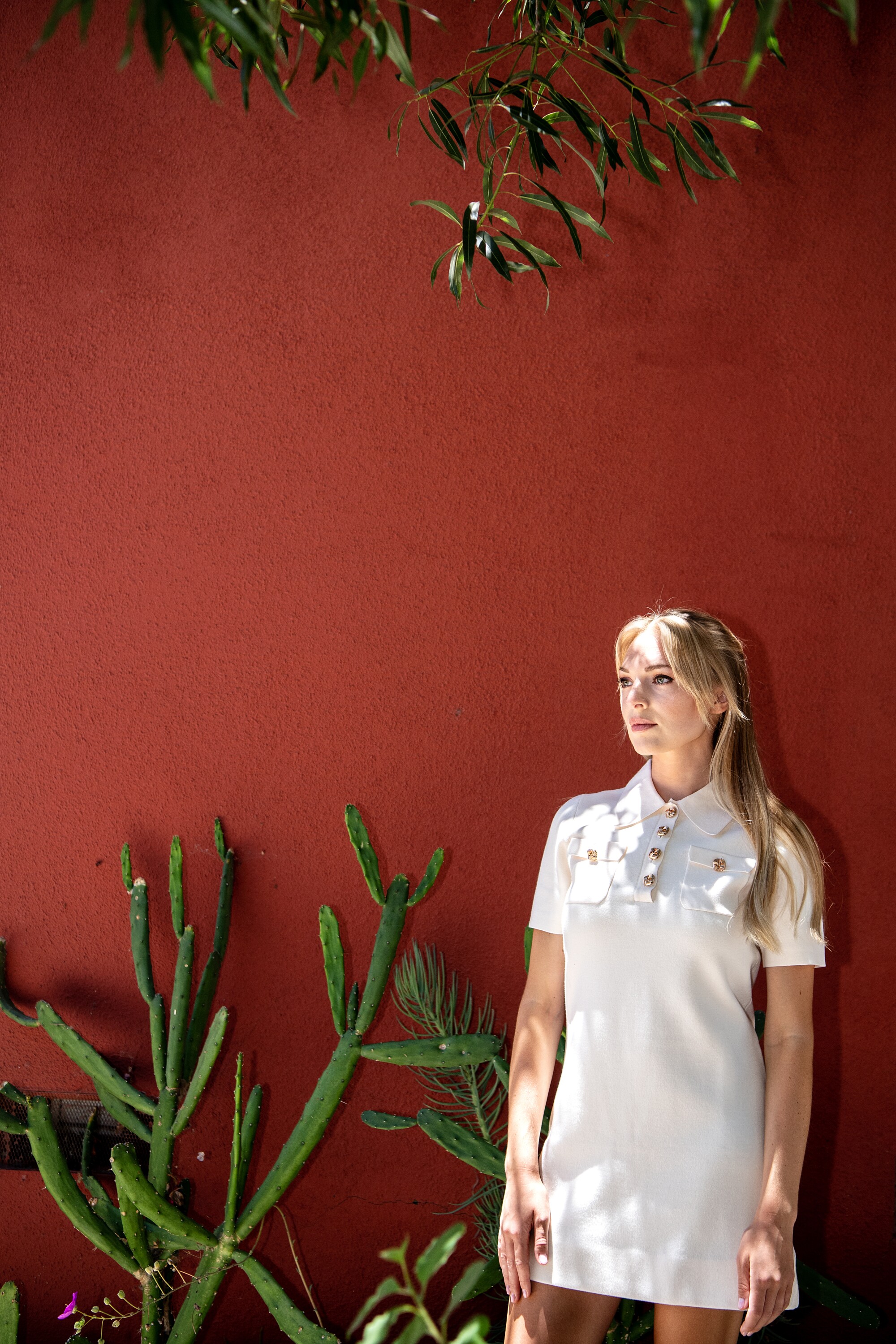On the shelf
the rabbit hutch
By Tess Gunty
Knopf: 352 pages, $28
If you purchase books linked to our site, The Times may earn a commission from bookstore.orgwhose dues support independent bookstores.
Seven years ago, when Tess Gunty began writing her debut novel, “The Rabbit Hutch,” she was 23 years old, living in New York, and experiencing a constant barrage of whistles when I was walking down the street.
She felt, she says, “like a deer that lives in hunting grounds”. As if his flesh didn’t belong to her. To cope, she would disassociate. “I started to feel this kind of alienation from my body,” says Gunty, now 29. “I started to feel like I had to leave my body to get to my next destination.”
“The Rabbit Hutch”, which will be released next Tuesday, begins with the protagonist literally coming out of her body. Blandine Watkins, a bright and flashy 18-year-old fresh out of the orphanage system, lies bleeding on the floor of his apartment. “[S]he has spent most of his life wishing this would happen”, clarifies the narrator. “Agony is sweet.”
It’s a powerful and brutal opening to a powerful and brutal book, brimming with dark and funny lines as it sprawls, like Blandine’s spirit of purgatory, over the fictional town of Vacca Vale, Indiana, along with an odd cast of characters. who reside in the La Lapiniere Affordable Housing Complex, also known as the Rabbit Hutch.
Entangled in Gunty’s kaleidoscopic plot are Hope, a young mother who is afraid to look her baby in the eye; middle-aged single Joan Kowalski, whose job is to project online obituary comments; Elsie Blitz, a former child star who publishes her own obituary; Moses, Elsie’s traumatized and unstable adult son; and her roommates Jack, Todd and Malik, teenagers obsessed with Blandine who devise a cruel and deadly game in an attempt to woo her. The real theme of Gunty, however, is a land of loneliness, wasted potential, and exploitation that feels uniquely American, as well as the human interconnections and lucky breaks that can help us survive.
It is difficult, at first glance, to square the author of this web of torment, chaos and ecstatic visions with the quiet and humble woman in a black dress with a white collar who sits opposite me on the patio of Botany Restaurant in Silver Lake, where he lives with his partner. But then, gradually, existential dread wells up in a conversation about his novel, New York, Los Angeles, the Midwest, and loneliness. Between the interruptions of honking cars and rattling trucks, he confesses that he is sometimes consumed by paralyzing anxiety.
When I ask her what gets her out of bed every morning, she offers two answers. “My cats ask for food,” she says between laughs. She adores Fiona and Tello (short for Donatello). She then turns to the curiosity and radical lessons of the French philosopher and mystic. simone weill.
“I feel more alive when I’m learning and I feel more alive when I mentally dive into something that I don’t understand or is very new to me,” says Gunty.
She quotes a line from Weil’s trial “Attention and Will”: “Knowing that this man who is hungry and thirsty really exists as much as I do, that is enough, the rest follows by itself”.
Gunty thinks along that line a lot in relation to the experience of being a human among others, including creatures of the natural world.

“Every pain they feel is as real as yours, every joy is as real as yours, and I think if you can really believe that everyone you know and everyone you don’t know, you’re naturally drawn to. to kindness,” she says.
It is a philosophy at the core of Blandine. Orphaned and abused by the people and systems that failed her, she has almost no structural power but she possesses a strong moral force to resist them: she rants about the horrors of capitalism and violence against women, and when an urban revitalization project threatens to destroy a beloved park, she protests a developer meeting with voodoo dolls and fake blood.
Blandine, who is obsessed with holy martyrs, is the heroine Gunty always wanted to see, not just as a child, but now, as an adult.
“I think she’s a very principled person who is interested in acting on her principles, without acting, and finding ways to make her immediate environment a more just place,” says Gunty. “I don’t think anything she does is guaranteed to work and she knows it…and yet she resists anyway, and that’s extremely hopeful to me.”
Vacca Vale is a former epicenter of car manufacturing gone rotten; feels like a microcosm of American decline and a victim, to Gunty, of many of the country’s problems: structural racismhousing shortage, climate change and so on. “Lately, and more and more, I feel a very visceral fear of poorly regulated capitalism,” he admits. “I think almost all the major crisis America is facing right now is enabled and made worse by the extractive economy.”
Floating in and out of the characters’ thoughts can result in a dizzying reading experience. Gunty’s friend, Crystal Powell, felt similarly whenever the author spoke at her New York University MFA program.
“It’s an iconic Tess move,” Powell said, “the pointless question.” Gunty would raise his hand and ask “something completely out of character,” channeling the conversation in unexpected directions.
“It’s one of the things that made me fall in love with her,” Powell added. “Every time I think about Tess, I’m like, ‘What’s on her mind?’ because she sees things that other people don’t see. She has such a density of thought that I can’t even begin to comprehend.”
…
There are two ways to tell about Gunty’s life so far. In one version, she is a born storyteller, making up stories when she was a little girl, emerging by dint of raw talent from a low-income, post-industrial area. South Bend, Ind., to study with some of New York’s most influential writers and publishers. The other version of the story is that she got lucky and got a lot of help. This is the one she prefers to tell.
From a very young age, Gunty was very aware of the socio-economic situation disparities from his hometown, an inspiration for Vacca Vale. Because his mother was an art teacher at a Catholic high school, Gunty attended the expensive school for free.
“In the context of my neighborhood, I was sometimes almost embarrassed by the awareness of the unequal distribution of luck at birth and the fact that everyone is dealt a hand, and it doesn’t seem like the same deck produces every hand, ” she says.
In the novel, Blandine is tragically precocious; she makes her a target. As a child, Gunty was too; before her he could spell that he liked to draw and narrate stories to his father, who transcribed them.
But she adds that it was a gift from a friend that inspired her to start writing stories at the age of 3 or 4. “She was really amazing at writing, even when we were kids,” Gunty recalls. “Especially as a kid, when you see another kid accomplish something great that you think only adults can do, it’s extremely motivating.” Her friend’s mother assigned the children writing prompts, and her love for the craft blossomed.

“Every pain” any creature feels “is as real as your pain, every joy is as real as yours,” says Gunty. The heroine of his novel, Blandine, shares that philosophy.
(Mariah Tauger/Los Angeles Times)
Gunty was also lucky to have a father who worked in notre dame: Enrollment was free. “I would never have chosen to stay in my hometown if I had any other choice,” he says with a laugh. He considered becoming a journalist, but the school didn’t offer a program, so he studied creative writing. In a way, writing fiction “was a fate that was decided by accident.”
After graduating, he immediately fled the Midwest to pursue a Master of Fine Arts. It was in New York that she discovered that she was not really alone. “Obviously you don’t want anyone to suffer, but it’s a great comfort to be around people who also find the daily task of inhabiting a conscience demanding and difficult and sometimes insurmountably difficult.”
John Freemana Knopf editor who taught a course on building stories at New York University recalls that Gunty listened in class more than he talked.
“But when he said something in class, it had the force of a revelation,” he said. “She has the ability to see both the structure of a book and its meaning at the same time, and her narrative intelligence really impressed me.”
Later, when Freeman went on to read “The Rabbit Hutch” and eventually became its editor, he was “blown away” by Gunty’s range of voices and his “ability to write at the spirit level while also writing about urban decay.” “. … I think it’s unusual, to put it mildly, for a book with such dazzling architecture and such deep spiritual insight to come early in a writer’s life, so I can only imagine what comes next for her. It fills me with great anticipatory joy.”
Jonathan Safran Foer is another fan. “Tess writes generously. Despite the overflowing offers, he is not eager and does not intend to prove the intelligence of the creator of him,” the novelist, Gunty’s mentor and former New York University professor, said in an email.
“It would not fall into the category of ‘hysterical fiction’ that [critic] James Wood defined it a couple of decades ago,” says Foer. “Rather, it is filled with a kind of infectious life force. It fills the reader with joy and wonder.” (Wood coined “hysterical realism” in 2000 to criticize ambitious novels full of interlocking, sometimes outlandish plots, but inauthentic characters).
In the years that Foer has known Gunty, he has come to seek his advice. “She’s one of three people I go to when I need an idea that I can’t come up with on my own, when I’m stumped and looking for clarification on something in the world, when I just want a wise opinion,” she said. additional.
Elsie, the book’s former child star, writes in her automatic obituary, “Everything affects everyone.” If the novel had a thesis statement, that would be it, says Gunty. For all its fear and isolation, “The Rabbit Hutch” is a story about being simultaneously interconnected and interdependent. one whose ending forges a bond between two characters who thought they were alone.
After four years of working hard in New York, Gunty and his partner, an urban designer, moved to downtown Los Angeles in 2019. When the pandemic shutdown hit in 2020, they moved to Silver Lake, mainly because he missed the trees.
Just as he did that year, Gunty still spends most of his time around the Silver Lake Reservoirwalking along its edges or sitting in the meadow, reading and sketching ideas until it gets too hot or she starves.
Then he walks home to eat, deals with the administrative tasks that come with publishing a book, and most importantly, writes. And rewrite. She is working on his second novel, “Honeydew,” which will be published next year.
She is reluctant to say too much, but it will be structured as three novels built around three characters, all strangers, who are affected by an event that brings them together.
